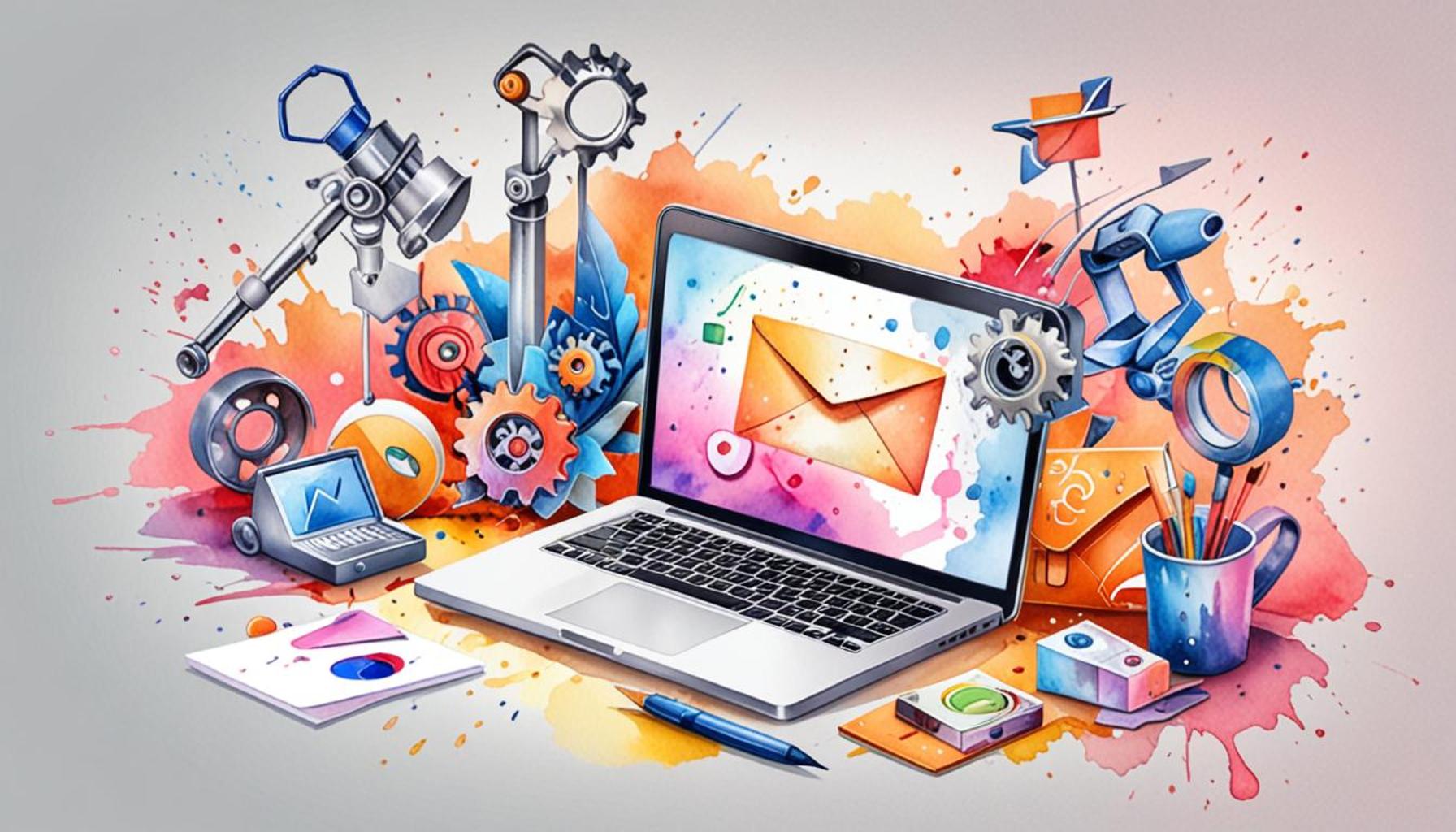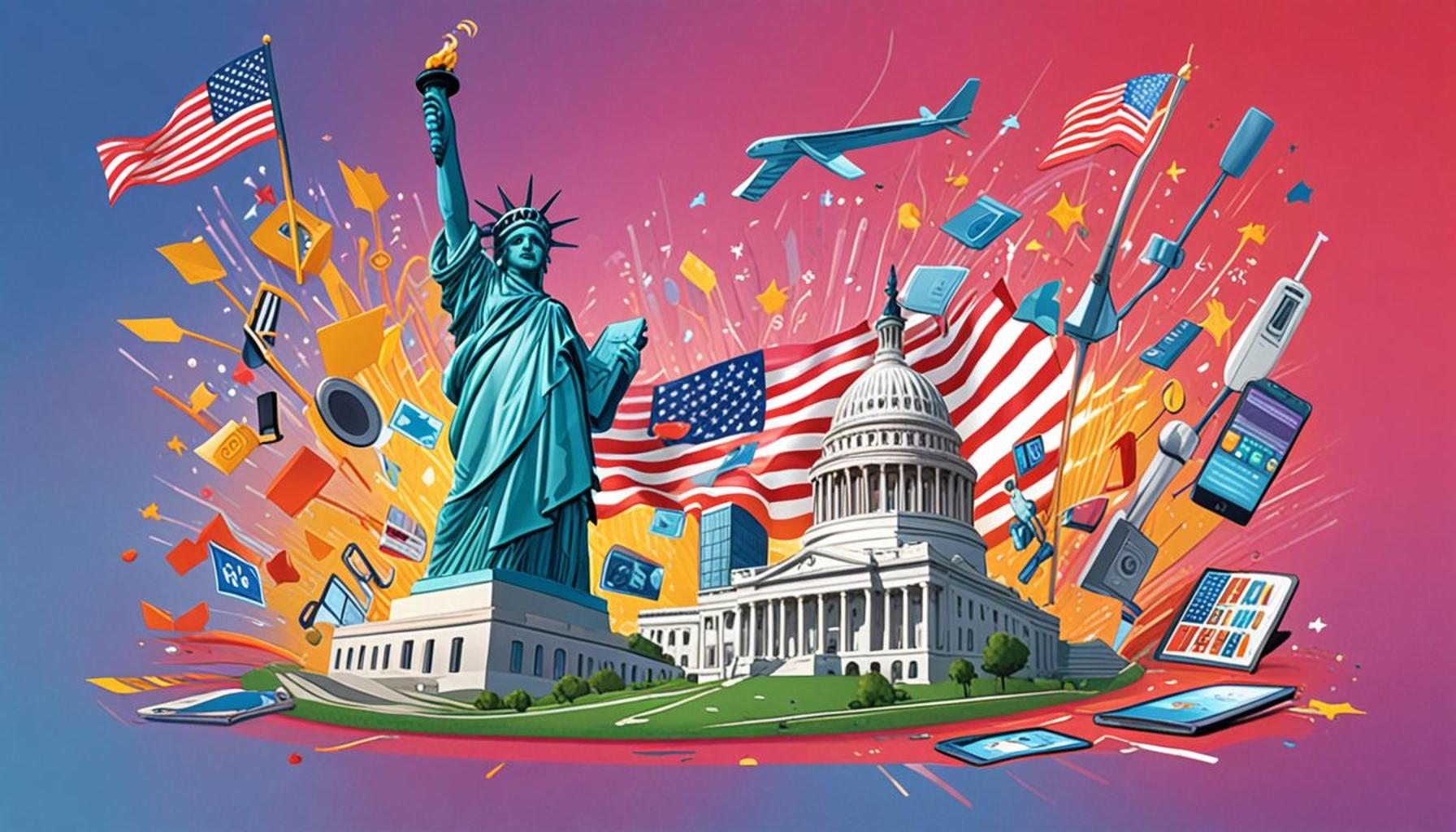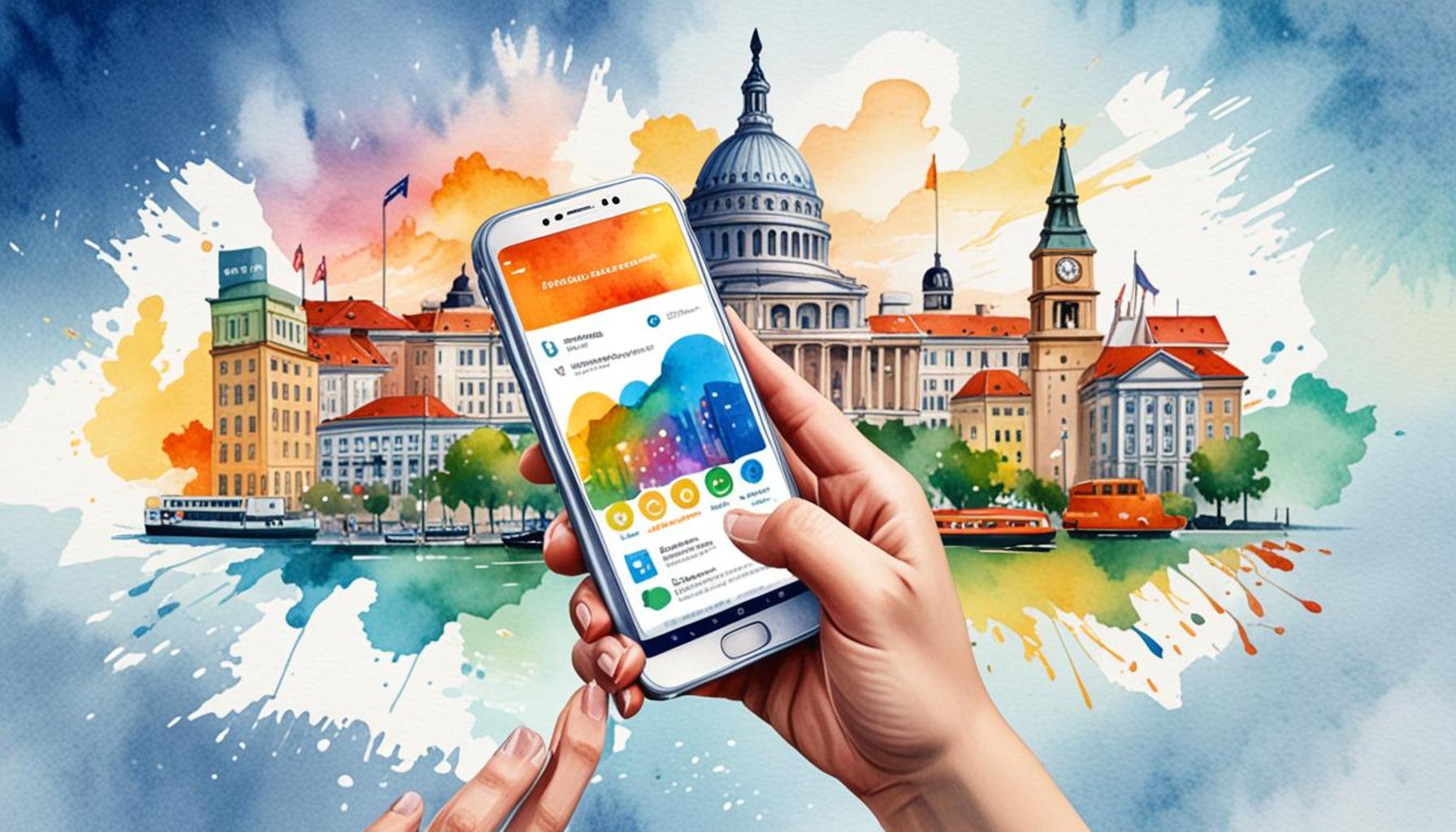Marketing Automation: How Digital Tools Are Transforming Customer Communication

Redefining Customer Engagement through Technology
Effective communication with customers remains a cornerstone of successful business strategies, especially in an era characterized by rapid digital advancements. The surge in digital tools has not only streamlined operations but fundamentally altered the dynamics of customer engagement. Within this landscape, marketing automation emerges as a vital catalyst, transforming traditional methods into innovative practices that meet the demands of today’s consumers. So, what changes can we observe in the realm of customer interaction due to these technological advancements?
- Efficiency: By automating repetitive tasks, marketers can allocate their valuable time to strategizing and creative thinking. For instance, tools that automate email campaigns allow marketing teams to designate their efforts toward crafting compelling narratives that resonate with their audience, rather than getting bogged down in logistical tasks.
- Personalization: Advanced analytics facilitate tailored messaging, enhancing engagement with customers. Brands can harness data to craft specific offers that resonate with different segments of their audience, leading to higher open rates and conversions. A prime example is Netflix, which utilizes viewer data to provide personalized recommendations, thus enriching user experience.
- Consistency: Automated communications promote uniformity across various channels, ensuring that customers receive cohesive messages whether they interact with a brand on social media, email, or through customer service. This consistent messaging builds brand trust and recognition.
The transition to these automated systems does not merely streamline operations; it also redefines the customer experience. As organizations harness these capabilities, they begin to realize significant advantages:
- Lead Generation: Automation tools empower businesses to nurture leads effectively, with targeted campaigns that address the specific interests of potential customers. For instance, a furniture retailer might use automated follow-ups to remind customers of items left in their cart, effectively improving conversion rates.
- Analytics: Businesses now have access to comprehensive insights derived from customer data. This wealth of information enables marketing teams to make informed decisions, fine-tuning their strategies in real time based on what is or isn’t working.
- Cost-effectiveness: Marketing automation inherently reduces costs, allowing companies to maintain high-quality outreach without the need for extensive human resources. Small businesses, in particular, benefit as they can compete more effectively with larger firms despite limited budgets.
In summary, the integration of marketing automation tools is paving the way for a new chapter in customer communication. By embracing these advancements, companies across the United States can optimize their marketing strategies, engage their audiences more effectively, and ultimately enhance their bottom lines. Stay tuned as we delve deeper into the multifaceted impacts of these transformative technologies and explore what the future may hold for customer communication practices.
SEE ALSO: Click here to read another article
Unleashing Potential through Automation
The impact of marketing automation on customer communication is undeniable. By redefining how businesses interact with their audiences, these digital tools not only enhance the efficiency of marketing efforts but also unlock a variety of strategic opportunities that were once beyond reach. In a hyper-competitive marketplace like the United States, companies are finding that automation is not just a luxury, but a necessity to thrive.
As firms leverage automation technologies, they are witnessing a transformative effect in several key areas:
- Enhanced Customer Journey: Every touchpoint in the customer journey can be optimized through automated workflows. For example, a potential buyer may receive a welcome email immediately after signing up for a newsletter, followed by a series of informative emails tailored to their interests. This not only fosters a sense of connection but also guides prospects along their path to purchase.
- Timely Engagement: Automation allows businesses to communicate with their customers at the right moment. This is particularly valuable during critical phases of the buying process. Email reminders for abandoned shopping carts or personalized discounts sent at just the right time can significantly boost conversion rates.
- Streamlined Campaign Management: Campaigns that previously required extensive human oversight now run with minimal intervention. Automated processes manage everything from social media posts to email blasts, freeing marketing teams to focus on more nuanced tasks, such as developing creative concepts and analyzing performance metrics.
The shift towards automated marketing doesn’t just improve operational efficiency; it also empowers organizations to respond swiftly to evolving consumer expectations. Brands are increasingly utilizing data-driven insights generated by these tools to craft campaigns that resonate deeply with their target audiences. Consider the imminent rise of predictive analytics—tools that anticipate consumer needs and preferences, allowing businesses to tailor their outreach more precisely than ever before.
Moreover, the integration of artificial intelligence in marketing automation solutions is pushing boundaries further. AI-driven chatbots, for instance, can manage customer inquiries in real time, providing instant support and fostering an interactive experience that builds loyalty. A notable example is Sephora, which employs a virtual artist on its app, enabling customers to visualize products, thus enhancing both engagement and conversion.
In light of these advancements, it is clear that the utility of marketing automation extends beyond mere efficiency—it’s about creating a more engaging and personalized experience for the customer. Companies that harness these powerful tools are not only improving their operational capabilities but are also forging deeper connections with their audience, paving the way for sustained growth and brand loyalty in the process.
As we delve further into this dynamic realm, it becomes increasingly evident that embracing marketing automation is not just a trend, but rather a crucial stride towards future-proofing customer communication strategies.
| Advantages | Key Features |
|---|---|
| Increased Efficiency | Automation streamlines repetitive tasks, allowing marketers to focus on strategy and creativity. |
| Enhanced Targeting | Digital tools analyze customer data for personalized messaging, improving engagement rates. |
| Improved Customer Insights | Automation captures and analyzes data, offering deeper understanding of customer behaviors and preferences. |
| Cost-Effectiveness | Reducing manual processes cuts operational costs, making marketing strategies more budget-friendly. |
As you delve deeper into “Marketing Automation: How Digital Tools Are Transforming Customer Communication,” you’ll discover that these advantages create a fundamental shift in how businesses interact with their customers. Not only do these digital tools facilitate more efficient communication, but they also enhance the customer experience by providing relevant content tailored to individual preferences. As automation tools continue to evolve, staying informed on their capabilities and best practices empowers marketers to leverage these innovations effectively, driving engagement to new heights. This ongoing transformation is reshaping customer communications, making it essential for businesses to adapt and thrive in an increasingly digital landscape.
SEE ALSO: Click here to read another article
Revolutionizing Insights and Personalization
The landscape of marketing automation is bustling with innovation, a core aspect of which is the ability to harness data to create personalized experiences for consumers. In a world where consumers are bombarded with choices and messages, tailoring communications has become not just advantageous but vital for brands hoping to survive the digital age.
One compelling example of this is the use of customer segmentation. Automated tools can analyze a wealth of data such as past purchasing behavior, website interactions, and demographic information to categorize customers into distinct groups. This allows marketers to craft tailored strategies for each segment, ensuring that the right message reaches the right person at the right time. According to recent studies, personalized marketing campaigns can result in a 6x higher transaction rate, thus amplifying the effectiveness of marketing efforts.
Furthermore, the continuous advancement of machine learning algorithms provides an added layer of sophistication. These algorithms can predict future consumer behavior based on historical data, facilitating proactive communication strategies. For instance, if a customer frequently browses particular categories on an e-commerce website, automated tools can initiate personalized email campaigns featuring relevant products, increasing engagement significantly. Notably, brands like Amazon have mastered this approach, generating a staggering 35% of their revenue through personalized recommendations powered by automation.
This shift toward data-driven decision-making is also transforming how businesses measure their success. Traditional metrics such as open rates and click-through rates are now supplemented by advanced analytics that provides deeper insights into customer behavior. By utilizing such metrics, marketers can conduct A/B testing more efficiently, optimizing campaigns in real time to enhance performance. This approach mitigates risk, as brands can base their decisions on tangible results rather than gut feelings.
Moreover, automation tools are enhancing customer feedback collection and analysis. Using Net Promoter Score (NPS) surveys and social listening tools, brands can gather valuable insights directly from customers, allowing for instant adaptation to emerging trends or dissatisfaction. For example, when a popular fast-food chain noticed an uptick in customer complaints regarding a specific product via social media sentiment analysis, they quickly addressed the issue, demonstrating the power of being responsive through automated tools.
The integration of omnichannel strategies further exemplifies how marketing automation is evolving. Businesses are deploying integrated platforms that streamline communications across multiple touchpoints—social media, email, websites, and mobile apps. This omnichannel approach ensures that customers receive consistent messaging, significantly enhancing brand perception. A report from Salesforce reveals that companies delivering a cohesive customer experience across channels achieve 89% higher customer retention rates compared to those lacking such integration.
In essence, the rise of marketing automation is about more than efficiency; it’s about cultivating a rich and personalized customer experience driven by data and insights. As businesses continue to embrace these digital tools, they are not only transforming their communication practices but are also setting new standards for customer engagement in an increasingly competitive environment. The future of marketing automation is indeed bright, steadying the ship toward deeper connections and longer-lasting consumer relationships.
RECOMMENDED: Check out this similar article
Conclusion
The journey through the evolution of marketing automation unveils a transformative realm for customer communication, where digital tools serve as the cornerstone of successful engagement strategies. These technologies not only streamline operations but also empower brands to connect with consumers on a more profound level. The adoption of customer segmentation and predictive analytics exemplifies how businesses can craft personalized interactions that resonate with individual preferences, fostering loyalty and driving conversion rates.
As seen from industry leaders like Amazon, the integration of machine learning algorithms is redefining consumer relationships by anticipating needs and preferences, creating a seamless shopping experience. Furthermore, the push towards omnichannel strategies ensures that communications remain consistent and accessible, which is vital in an age characterized by fragmented consumer attention. Companies that leverage these holistic approaches stand to significantly enhance their brand perception and customer retention.
In an increasingly competitive market, the impact of effective marketing automation cannot be overstated. Businesses that invest in these tools are not merely keeping up with the trends; they are setting benchmarks for engagement that others must follow. As we move forward, the commitment to harnessing data-driven insights and continuously adapting to consumer behavior will be crucial. Brands equipped with advanced digital tools will not only thrive but will also shape the future of customer communication, laying the groundwork for deeper, more meaningful interactions.
In conclusion, as the digital landscape continues to evolve, one thing is certain: marketing automation will play a pivotal role in redefining how brands communicate with their audiences. Embracing these innovations offers an unparalleled opportunity to forge lasting connections with customers, ensuring that businesses not only meet but exceed expectations in the dynamic marketplace.


